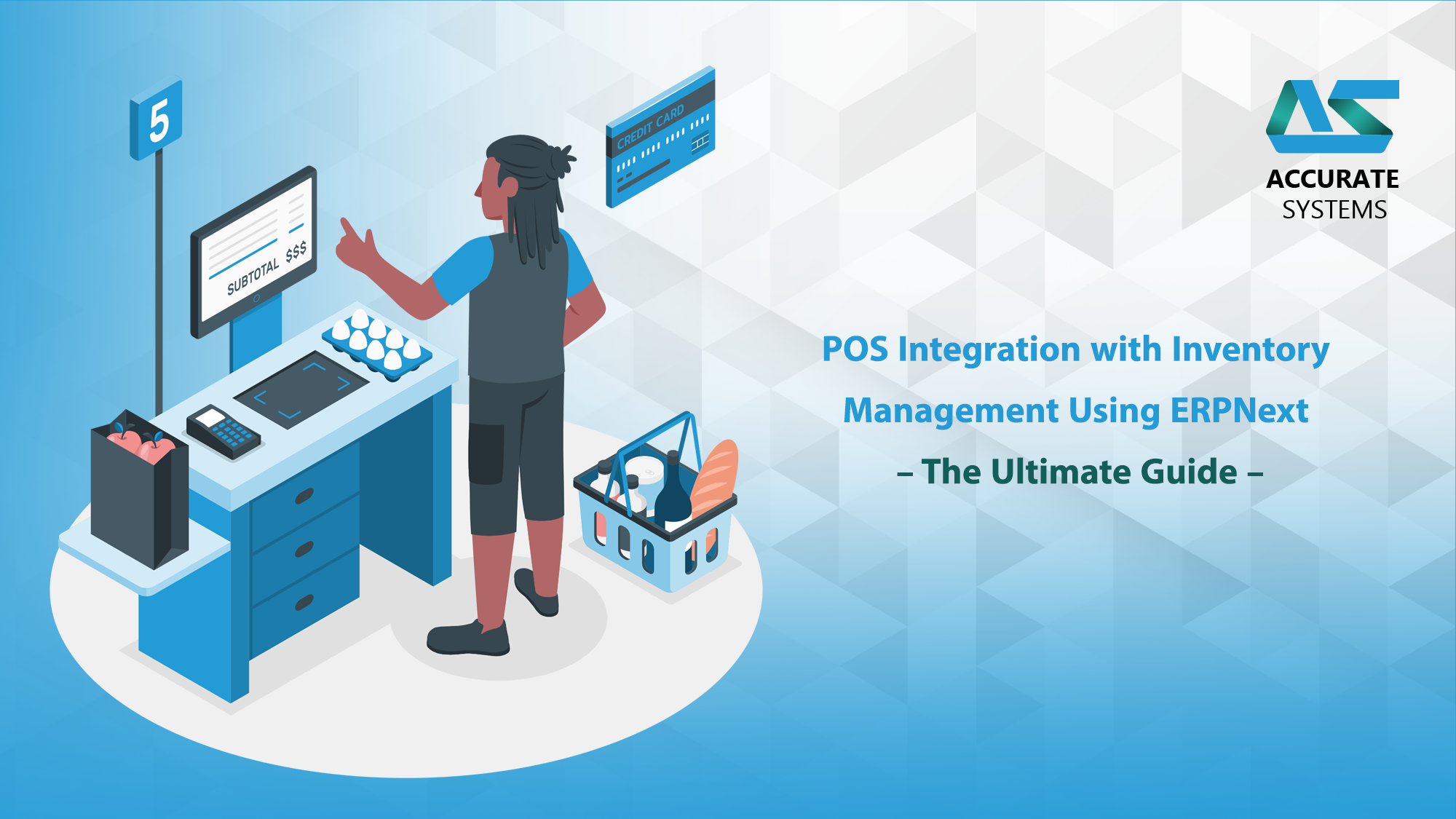Introduction
In the competitive world of retail and inventory management, integrating a Point of Sale (POS) system with inventory management is essential for efficiency, accuracy, and growth. ERPNext, a powerful open-source ERP software, offers a fully integrated solution that streamlines business operations, enhances stock control, and improves overall profitability.
In this guide, we’ll explore the benefits, features, and implementation process of ERPNext POS and inventory integration, helping businesses optimize their sales and inventory workflows effortlessly.
Key Features of ERPNext POS and Inventory Integration
1. Real-Time Inventory Synchronization
- Instant stock updates for every POS transaction.
- Prevents overselling by ensuring accurate stock levels.
- Supports multi-location inventory tracking for franchises and retail chains.
2. Automated Sales and Stock Reconciliation
- Real-time stock deductions upon successful sales.
- Tracks inventory movement between warehouses and stores.
- Generates sales analytics and inventory reports for better decision-making.
3. Barcode Scanning and SKU Management
- Quick transactions using barcode scanners.
- SKU-based product organization for efficient tracking.
- Enhanced checkout experience with minimal errors.
4. Multi-Store and Multi-Warehouse Support
- Centralized stock tracking across multiple stores and warehouses.
- Real-time insights into store-wise inventory levels.
- Seamless inter-store stock transfers for optimized distribution.
5. Automated Reordering and Stock Alerts
- Set minimum stock levels to trigger auto-replenishment.
- Receive low-stock alerts to prevent stock-outs.
- Streamlined purchase management for better cash flow.
6. Integrated Payment Processing
- Accept multiple payment methods (cash, credit, mobile wallets, etc.).
- Seamless financial tracking with ERPNext accounting integration.
- Automated tax calculations for compliance and accuracy.
7. Customer and Loyalty Management
- Capture customer data for personalized engagement.
- Implement loyalty programs to enhance customer retention.
- Leverage purchase history for targeted marketing campaigns.
8. Offline Mode Functionality
- Process transactions offline, ensuring uninterrupted sales.
- Auto-sync sales data once internet connectivity is restored.
- Minimize downtime risks in case of network failures.
9. Comprehensive Reporting and Analytics
- Real-time reports on sales, stock levels, and profitability.
- Identify best-selling products to adjust inventory strategies.
- Data-driven forecasting for improved business decisions.
Benefits of ERPNext POS and Inventory Integration
- Boost Operational Efficiency – Automates stock and sales management, reducing manual tasks.
- Eliminate Stock Discrepancies – Ensures accurate inventory control across all locations.
- Enhance Customer Satisfaction – Faster checkouts and stock availability improve the shopping experience.
- Optimize Financial Control – Real-time sales and payment tracking streamline cash flow.
- Reduce Costs – Open-source flexibility eliminates expensive licensing fees.
- Scalability – Adapts to businesses of all sizes, from single-store operations to large enterprises.
- Seamless Business Integration – Works with ERPNext’s accounting, CRM, and warehouse management modules.
How to Implement POS and Inventory Management in ERPNext
Step 1: Configure POS Settings
- Set up POS profiles with store location, pricing rules, and payment methods.
- Assign user roles and permissions for better security.
Step 2: Set Up Inventory Management
- Define warehouses, product categories, and SKUs.
- Enable real-time stock updates upon POS transactions.
Step 3: Integrate Barcode Scanning
- Configure barcode scanners for quick product lookup.
- Ensure products have unique SKUs mapped to barcodes.
Step 4: Enable Payment Gateway Integration
- Connect with popular payment processors (Stripe, PayPal, etc.).
- Configure multi-payment options for seamless checkouts.
Step 5: Automate Stock Replenishment
- Set reorder points and automatic purchase triggers.
- Manage suppliers and purchase orders for efficient procurement.
Step 6: Train Staff and Monitor Performance
- Provide training on ERPNext POS usage for smooth operations.
- Track store performance and stock movement using real-time reports.
Step 7: Optimize with Data Analytics
- Leverage sales and inventory insights to improve decision-making.
- Identify top-performing products and adjust stock accordingly.
Conclusion
By integrating ERPNext POS with inventory management, businesses gain a powerful tool to streamline sales, reduce stock errors, and enhance profitability. The seamless synchronization between point of sale transactions and real-time inventory updates ensures better stock control, optimized operations, and an improved customer experience.
Whether you run a single-store retail shop or a multi-location enterprise, ERPNext’s POS and inventory integration is the perfect solution to drive efficiency, improve stock management, and boost revenue.
🚀 Ready to take your retail business to the next level? Implement ERPNext today and experience a smarter way to manage POS and inventory!


